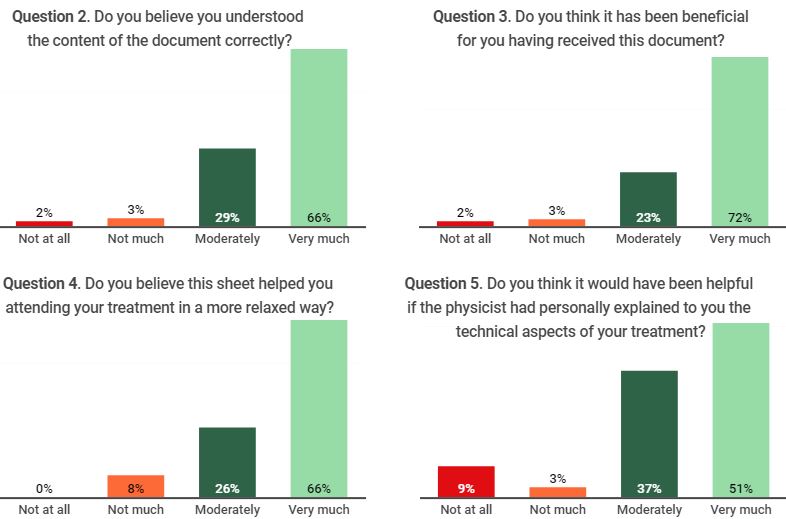Medical physicist’s clinical role: a patient survey
Eva Maria Ambroa Rey,
Spain
PO-1073
Abstract
Medical physicist’s clinical role: a patient survey
Authors: TERESA VALDIVIELSO LOPEZ1, Eva Ambroa1, Julia García-Miguel1, Ángel Infestas1, David Navarro1, Antoni Ramirez1, María Lizondo1, Ángel Lorenzo1, Montserrat Colomer1
1Consorci Sanitari de Terrassa, Radiotherapy, Terrassa, Spain
Show Affiliations
Hide Affiliations
Purpose or Objective
There has been a recent debate on broadening the scope of medical physics practice to include increasing participation in direct patient care. Physicists have long played a critical role in the safe and effective delivery of radiotherapy, whereas direct interactions with patients have been limited.
AAPM has published several guidelines (MPPG 10.a) suggesting physicist-patient interactions are to be included in the standard scope of practice for clinical physicists.
The objective of this study is the first step to evaluate the necessity of medical physicist-patient interactions within our department.
Material and Methods
From the Medical Physics Unit, we designed an information sheet containing useful data related to the role of medical physicists, in addition to technical details about the treatment design and the LINAC quality assurance. On the day of the CT simulation, we gave this information sheet to each patient, except for those in an advanced stage of the disease. Before starting the treatment, the patients had time to read and assimilate the information at home.
At the end of the treatment, each patient received an anonymous voluntary survey with six simple questions, regarding the information contained in the document. They submitted the survey in a box.
Results
We collected 78 surveys from August to October 2022. The first question in the survey was whether the patient had read the information sheet and 83% answered affirmatively.
The aim of the following four questions was to test whether the information supplied was helpful to the patients. Figure 1 shows the results of questions 2, 3, 4, and 5. Most patients believed they had understood the document and stated that having received the sheet was beneficial for them.

Figure 1. Questions 2, 3, 4 and 5.
The last question was used to assess if there were any doubts. None of the patients reported any doubt.
Conclusion
Several publications and guidelines have confirmed that physicist-patient interaction could reduce the anxiety of patients thanks to increasing the understanding of the technical aspects of their treatment.
In our department, the results of this survey have shown that the information provided by the medical physicist is useful to the patients. Moreover, most of them are willing to establish direct contact with the medical physicist.
Future work is needed to collect more surveys to assess more precisely the profit of establishing physicist-patient consults.